Step 1: Complete the American Heart Association online course.
Step 2: Perform skills testing in Campbell or another location.
Step 3: Receive the American Heart Association card same day.
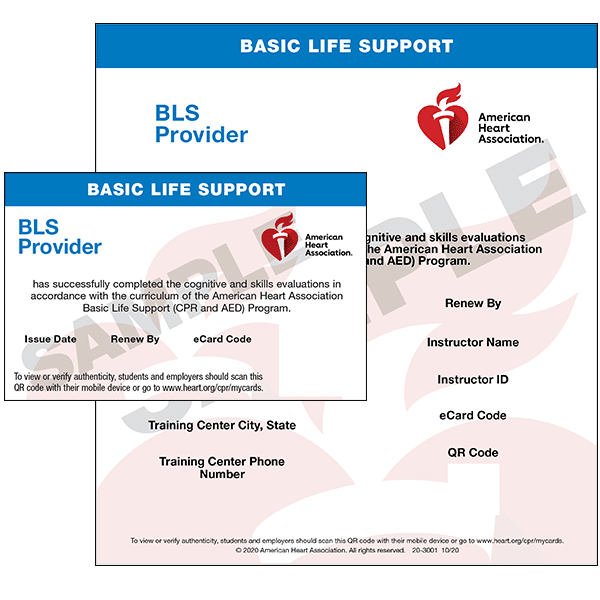
Basic Life Support
Online Course: 1-2 hours
Skills Testing: 30 minutes
100% Pass Rate Guaranteed
Lowest Price In Campbell
Receive Card On Class Day
Thousands of 5 Star Reviews
CE Credits to CA Dentists
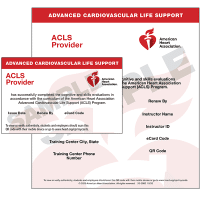
Advanced Cardiac Life Support
Online Course: 2-3 hours
Skills Testing: 30 minutes
100% Pass Rate Guaranteed
Lowest Price In Campbell
Receive Card On Class Day
Thousands of 5 Star Reviews
Some Professions: 2-3 CEU
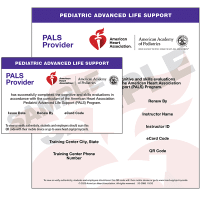
Pediatric Advanced Life Support
Online Course: 2-3 hours
Skills Testing: 30 minutes
100% Pass Rate Guaranteed
Lowest Price In Campbell
Receive Card On Class Day
Thousands of 5 Star Reviews
Some Professions: 3.75-5 CEU
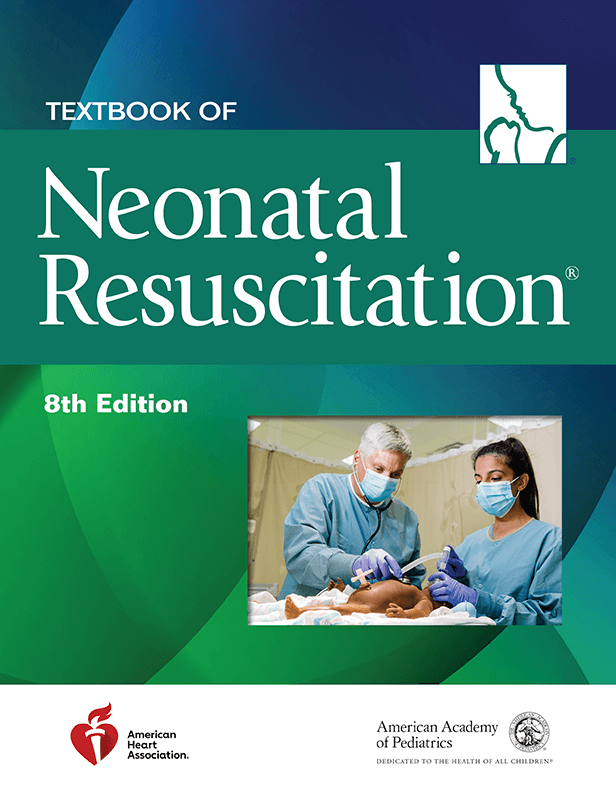
Neonatal Resuscitation Program
Online Course: 2-3 hours
Skills Testing: 3 hours
100% Pass Rate Guaranteed
Lowest Price In Campbell
Receive Card On Class Day
Thousands of 5 Star Reviews
Some Professions: 4 CEU
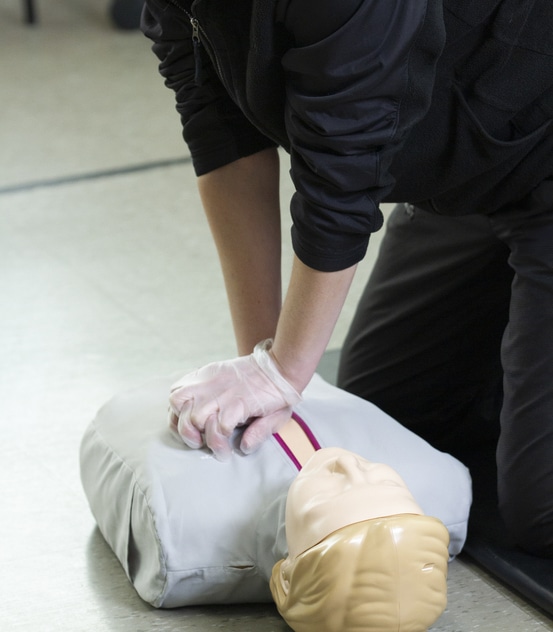
Audience: General public
Topics: CPR for all age groups, AED use, bleeding, epi-pen, etc
Online Session: 1 Hour
Skills Testing: 30 minutes
Card: Safety Training Seminars
Certification: Valid 2 years
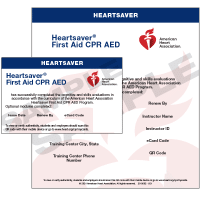
Audience: General public
Topics: CPR for all age groups, AED use, bleeding, epi-pen, etc
AHA Online Course: 1-2 Hours
Skills Testing: 30-45 minutes
Card: American Heart Association
Certification: Valid 2 years
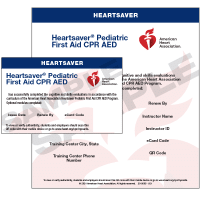
Audience: Childcare providers
Topics: CPR for all age groups, AED use, bleeding, epi-pen, etc
AHA Online Course: 1-2 Hours
Skills Testing: 30-45 minutes
Card: American Heart Association
Certification: Valid 2 years

Audience: Childcare providers
Topics: Lead poisoning, nutrition, infectious disease,etc
Zoom Course: 8 Hrs (state law)
Skills Testing: 30-45 minutes
Card: EMSA Health & Safety
Certification: No expiration
EXCELLENTTrustindex verifies that the original source of the review is Google. Convenient and efficient!Trustindex verifies that the original source of the review is Google. Outstanding!! I was incredibly impressed with the cleanliness of the facility and the user friendly technology. I was done was the BLS renewal in 20 min and received my certificate immediately after completing the course.Trustindex verifies that the original source of the review is Google. I was kind of nervous with out an instructor. But going in seeing the setup of dummy's table with everything u need and computer ready to go. It turned out to be very informative and easy to physically learn and do each module. I definitely enjoyed the hands on. I think it is a great idea. Keep up the good workTrustindex verifies that the original source of the review is Google. Excellent! Guided instruction with immediate feedback. Amazing! Highly recommendedTrustindex verifies that the original source of the review is Google. Easy to follow instructions, excellent availability.Trustindex verifies that the original source of the review is Google. I learned a lot in the BLS online course and the in-person testing was straightforward. I was impressed by how smoothly the test went without a person there. When I had a slight issue, I called them and they were very helpful. I would definitely take a course here again.Trustindex verifies that the original source of the review is Google. I really appreciated being able to do the modules at home and quickly get through check-off since I have taken ACLS and BLS multiples times before. The process for registration and getting the modules was easy. Communication from the company was clear. I marked it 4 stars because using their bag mask was a bit cumbersome and made it difficult to do breaths correctly. In addition, this mode of learning should not be used by first-timers/new grads. They really should do an in-person class to learn the crash cart, practice doing roles through a mega code, and use the defribulator. To pass this skills check off for both BLS and ACLS through this company, it only tested compressions and breaths on dummies hooked up to a computer. This is fine for experienced people, but beginners would be very lost in a real code. I would use this company again and recommend it for experienced RNs/MDs who are needing an easy recertification.
The American Heart Association RQI (Resuscitation Quality Improvement) program is the most popular, modern, and fast way for medical & healthcare professionals in Campbell to receive their official American Heart Association BLS, ACLS, and PALS certification cards.
Three Easy Steps
Safety Training Seminars (Founded 1989)
Safety Training Seminars is a woman-owned AHA Training Center that provides high quality American Heart Association BLS, ACLS, PALS, CPR & First-aid courses in Campbell, CA.
Excellent Customer Service
Safety Training Seminars has a top notch team of customer service reps that are available every day (including weekends) 8am – 10pm.
Classes Daily In Over 60 Cities
For our customer’s convenience, we offer AHA BLS, ACLS, PALS, CPR, & First-aid certification courses every day of the week in Campbell and other cities near you.
Certification Card
After the course, students will receive the official AMERICAN HEART ASSOCIATION certification card (valid 2 years).
Low Price Guarantee
Safety Training Seminars offers the lowest prices in Santa Clara County, backed by our Low Price Guarantee.
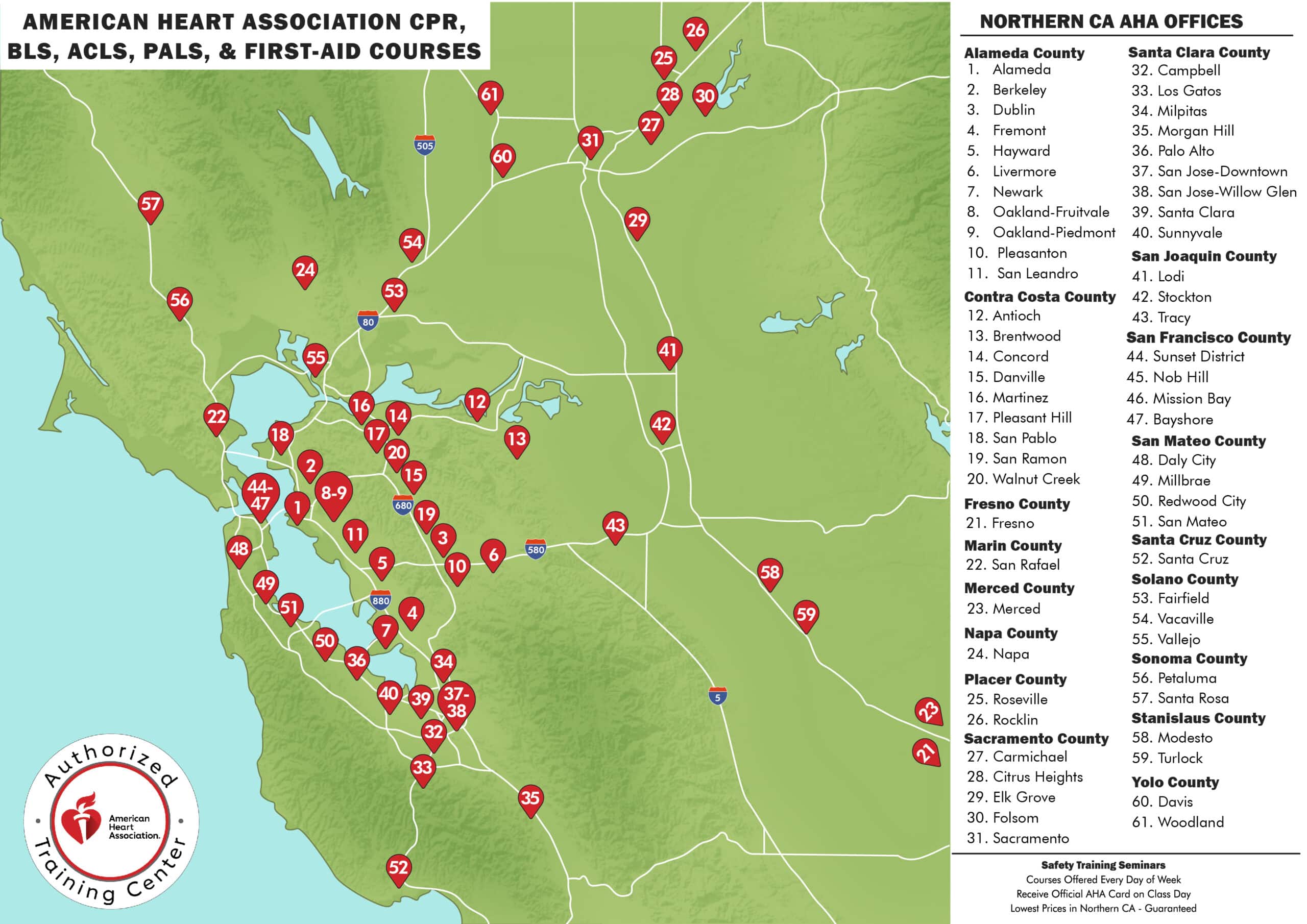
Saving a life isn’t just the work of superheroes—it’s something anyone can learn to do with the right training. Whether you’re a parent, teacher, healthcare provider, or just someone who cares about being prepared, knowing CPR, First Aid, or advanced life support skills can make all the difference in critical moments.
The American Heart Association (AHA) is globally recognized as a leader in life-saving training and certification programs. From basic CPR to advanced techniques like ACLS (Advanced Cardiovascular Life Support) and PALS (Pediatric Advanced Life Support), the American Heart Association’s evidence-based courses prepare individuals to take immediate action during emergencies. And if you’re in Campbell, CA, you’re in luck—accessing these crucial skills has never been easier.
There’s more to AHA certification than just learning a few techniques. Here’s why you should rely on the American Heart Association for CPR, First Aid, and life support training:
The American Heart Association has set the gold standard for CPR and life support training worldwide. Their courses are backed by decades of research, ensuring that learners receive the most up-to-date, evidence-based techniques. This credibility makes AHA certifications highly valued in both personal and professional spaces.
Whether you’re a nurse in a hospital, a teacher at a school, or a parent caring for your child, AHA certifications are universally recognized. Employers in industries such as healthcare, education, and corporate settings seek applicants with these qualifications, as they represent a trusted standard of knowledge.
From CPR to advanced life support, these courses equip participants with practical, hands-on skills. When faced with real-life emergencies like cardiac arrest or choking, AHA-certified individuals demonstrate calm confidence, saving precious time and lives.
CPR and First Aid lays the foundation for lifesaving skills that are accessible to everyone—from parents to professionals.
Key Topics Covered:
These skills are invaluable for everyday heroes looking to make a direct impact in their communities.
Focused on healthcare providers and first responders, the BLS course emphasizes team-based approaches to handling life-threatening emergencies.
Key Topics Covered:
BLS emphasizes the importance of timing, technique, and teamwork in saving lives, making it a must for professionals on the frontlines.
Designed for advanced healthcare professionals, ACLS goes beyond standard techniques to address the complexities of cardiac emergencies.
Key Topics Covered:
ACLS certifications are particularly relevant for critical care nurses, emergency doctors, and paramedics who routinely manage cardiac care.
Critical care for children and infants requires specialized knowledge and techniques. PALS certification empowers pediatricians, paramedics, and other medical professionals to address unique challenges.
Key Topics Covered:
PALS ensures medical professionals are fully equipped to safeguard the youngest and most vulnerable patients.
Still wondering why you should take the leap? Here are the top benefits of enrolling in an American Heart Association certification class in Campbell, CA.
AHA classes aren’t just lectures—they emphasize hands-on practice using state-of-the-art manikins and realistic scenarios. This ensures you’re ready when an emergency strikes.
Whether you’re entering the healthcare field or aiming to expand your opportunities in any profession that values safety preparedness, certifications like BLS, ACLS, and PALS elevate résumés and broaden career prospects.
For busy professionals, AHA offers blended learning formats that combine online theory with in-person practical training. You can learn at your pace while still benefiting from expert-led instruction.
AHA certification classes are designed to combine expertise with practicality. Here’s what you’ll experience in your training session:
AHA classes are tailored for a wide range of individuals and professions. Here are some ideal participants:
Looking for AHA classes near you? Here’s how to locate trusted training providers in Campbell, CA.
Preparedness saves lives. By completing a certification course with the American Heart Association, you gain more than just a certificate—you gain the knowledge and confidence to make life-saving decisions when it matters most. Whether you want to enhance your career or simply feel ready for emergencies, these courses will provide the skills to act effectively and decisively.
Start your lifesaving journey today. Sign up for an American Heart Association class in Campbell, CA, and take the first step towards making a real impact on the lives of others.
Safety Training Seminars CPR
125 E Sunnyoaks Avenue, Suite 111,
Campbell, CA 95008
(408) 716-8809